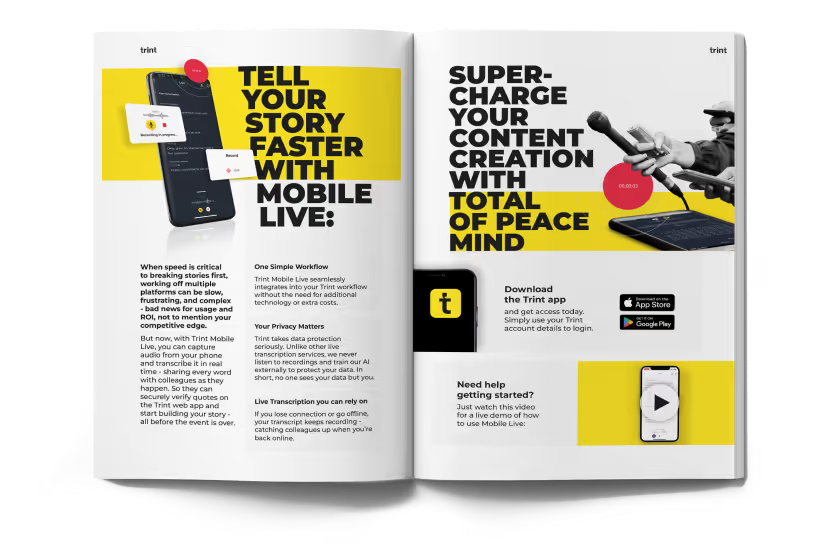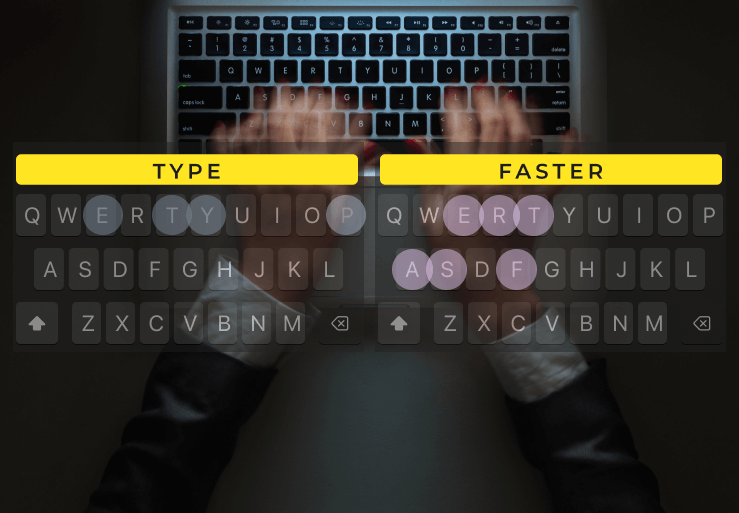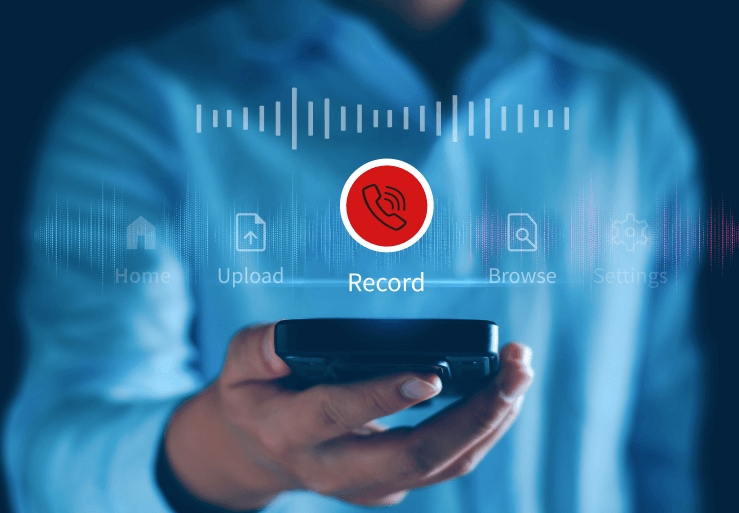
Qu'est-ce que la sténographie et que fait un sténographe ?
Vous êtes-vous déjà demandé comment les avocats, les juges et les équipes juridiques obtiennent un compte rendu précis, mot pour mot, de ce qui se dit au tribunal ? Voici le sténographe. Mais qu'est-ce qu'un sténographe, que fait exactement un sténographe et quelle est leur place dans le monde juridique d'aujourd'hui ?
Qu'est-ce qu'un sténographe ?
Le travail d'un sténographe consiste à capturer les transcriptions de tout ce qui est dit au tribunal. C'est important car elles deviennent le procès-verbal officiel.
Autrefois, les sténographes utilisaient la sténographie manuelle pour prendre des notes — c'était rapide, précis et épuisant. Aujourd'hui, la plupart des sténographes utilisent un sténotype. Cette machine ressemble presque à une machine à écrire, mais permet d'appuyer sur plusieurs touches simultanément pour enregistrer des syllabes, des mots ou des phrases en temps réel.
Vous pourriez également rencontrer un sténographe oral. Dans ce cas, le sténographe parle dans un silencieux vocal tout en écoutant simultanément le discours. Il répète chaque mot prononcé, y compris la ponctuation, et un logiciel spécialisé convertit ensuite cela en texte.
Quels types de sténographes existe-t-il ?
Vous verrez principalement des sténographes au tribunal et dans d'autres contextes juridiques, mais on les trouve aussi ailleurs.
- Sténographes médicaux : Transforment les notes audio des médecins et professionnels de santé en rapports médicaux précis.
- Sténographes d'entreprise : Capturent chaque détail des réunions d'entreprise, conseils d'administration ou conférences.
- Sténographes de diffusion : Aussi appelés sous-titreurs, ils fournissent des sous-titres en temps réel pour la télévision en direct et les flux en ligne. La vitesse et la précision sont essentielles — chaque mot doit apparaître au moment où il est prononcé.

Comment fonctionne la sténographie ?
Avec un sténotype, vous tapez des syllabes au lieu de lettres individuelles. Par exemple, la lettre « I » s'écrit comme son son « AY ».
Le clavier est divisé en trois sections : les consonnes initiales à gauche, les voyelles au milieu et les consonnes finales à droite. Comme pour la frappe à l'aveugle, votre main gauche couvre les touches de gauche, votre main droite celles de droite et vos pouces travaillent au milieu. En appuyant sur plusieurs touches simultanément — une technique appelée accord — les sténographes peuvent capturer des mots entiers en une seule frappe. Ce système leur permet d'atteindre des vitesses de plus de 200 mots par minute tout en maintenant une grande précision.
Comme un sténotype n'a que 22 touches, certaines lettres sont créées en combinant des frappes. Par exemple, HR est souvent utilisé pour taper le son L. Ainsi, le mot « light » s'écrirait HR + AY + T.
Avant les logiciels de transcription modernes, les sténotypes imprimaient la sténographie brute (par exemple, HR AY T). Après une session d'enregistrement, les sténographes devaient traduire manuellement leurs notes en anglais standard — un processus qui pouvait prendre des heures, surtout pour les longues audiences ou diffusions.
Aujourd'hui, les sténotypes modernes se connectent à des logiciels qui traduisent la sténographie instantanément. Cela permet de produire des transcriptions et des sous-titres pour les tribunaux, les diffusions en direct et les événements en temps réel.
Quelles compétences faut-il pour être sténographe ?
Si vous souhaitez devenir sténographe judiciaire ou sténographe dans un autre domaine, vous aurez besoin de quelques compétences clés.
- Vitesse et précision : Capacité à taper plus de 200 mots par minute avec un minimum d'erreurs. Vous devrez généralement suivre une formation formelle, comme un programme de formation aux comptes rendus judiciaires ou une formation au sténotype.
- Excellentes capacités d'écoute : Capacité à capturer chaque mot en temps réel, même dans les conversations rapides ou qui se chevauchent.
- Concentration et attention : Capacité à maintenir l'attention lors de longues procédures sans manquer de détails.
- Maîtrise de la langue : Connaissance de la grammaire, de la ponctuation et du vocabulaire pour garantir des transcriptions claires et précises.
- Compétences techniques : Aisance avec les machines sténotypes, les logiciels de transcription et parfois les outils de reconnaissance vocale.
- Confidentialité : Engagement à traiter les informations sensibles ou juridiques avec professionnalisme et discrétion.
- Connaissance du secteur : Comprendre le domaine dans lequel vous travaillez, comme le droit ou la médecine, peut être un grand avantage, mais ce n'est pas toujours indispensable.

L'avenir de la sténographie
L'avenir de la sténographie évolue avec l'essor des outils de transcription IA. Alors que les sténographes ont longtemps été la référence pour les tribunaux et les contextes à enjeux élevés, l'IA offre désormais une solution plus rapide et plus évolutive pour les besoins de transcription quotidiens. Des outils comme Trint peuvent transformer la parole, l'audio et la vidéo en texte précis et modifiable en quelques minutes.
Cela ne signifie pas que la sténographie va disparaître du jour au lendemain. Dans les contextes juridiques où chaque mot doit être capturé parfaitement en temps réel, les sténographes humains restent incontournables. D'une part, les sténographes peuvent clarifier certains termes pour le procès-verbal. Ils peuvent également capturer les paroles qui se chevauchent ou filtrer les bruits de fond importants — quelque chose que l'IA ne maîtrise pas encore tout à fait.
Mais pour les journalistes, les diffuseurs et les entreprises qui recherchent rapidité et collaboration, la transcription alimentée par l'IA devient déjà la solution privilégiée.
Le travail d'un sténographe est essentiel. Ils ont été indispensables pour capturer des comptes rendus précis, mot pour mot, pendant des décennies. Et dans de nombreux contextes à enjeux élevés, cela ne changera pas de sitôt.
Mais la façon dont nous capturons la parole évolue rapidement. Les outils de transcription IA comme Trint permettent désormais à quiconque — pas seulement aux sténographes formés — de transformer l'audio et la vidéo en texte précis et modifiable en quelques minutes. Réservez votre essai gratuit de 7 jours dès aujourd'hui pour découvrir comment Trint peut améliorer votre flux de travail.

DON'T take our word for it
Download our eBook, Telling Stories Faster With Trint, and hear how Trint is making content creation faster, easier and, most importantly, painless for newsrooms across the world.
Download








